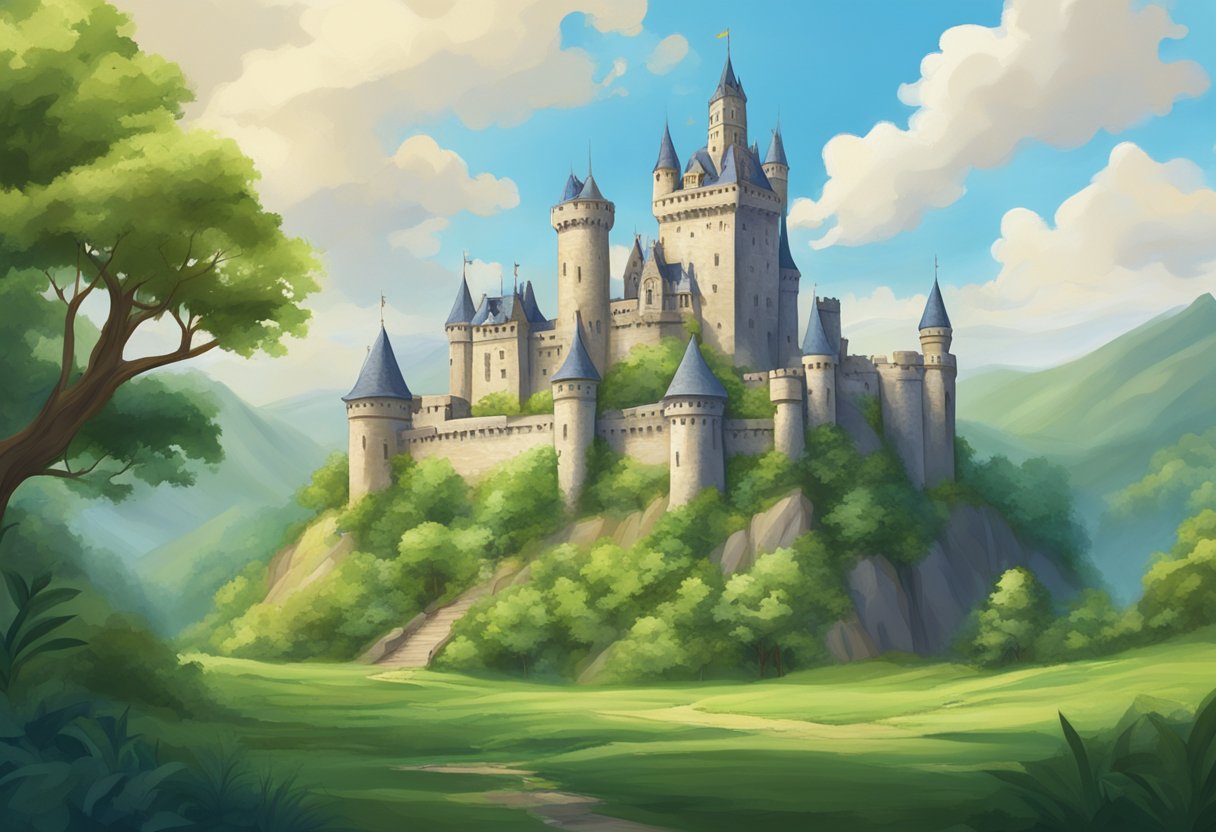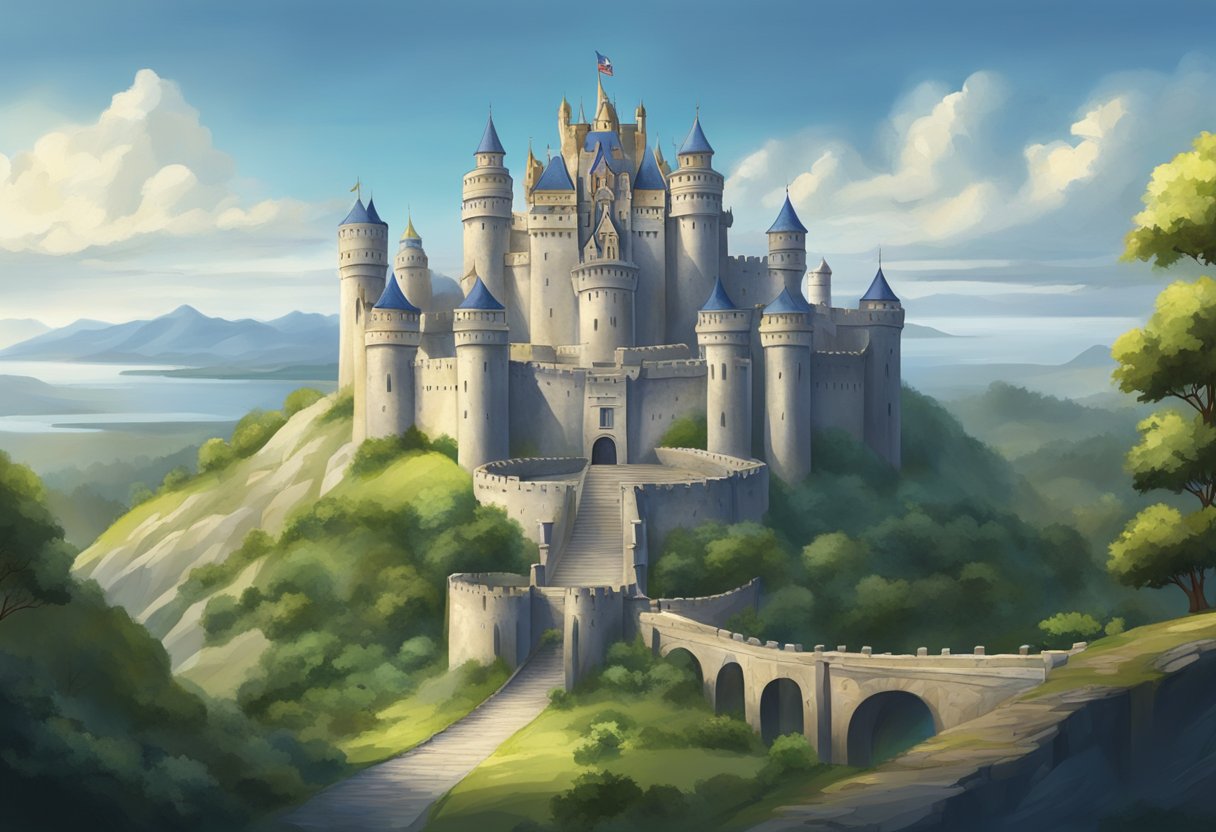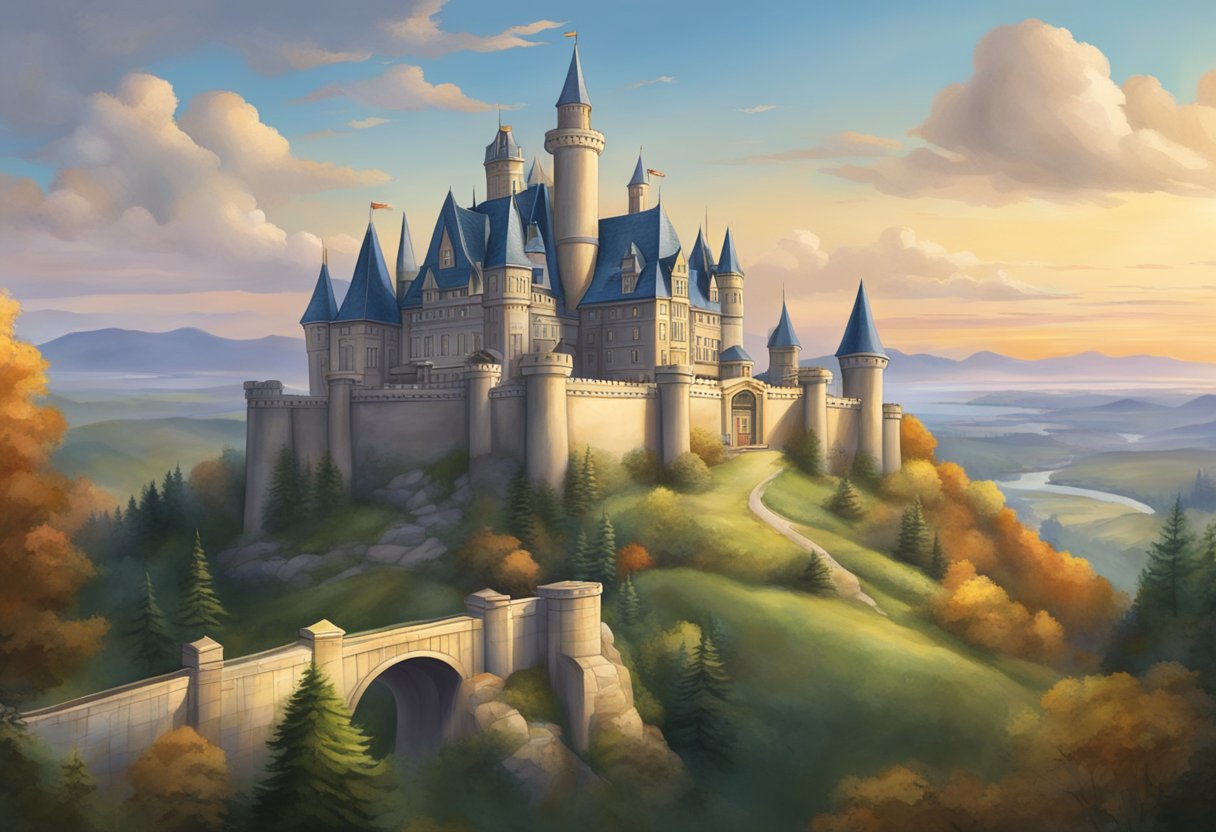While the United States may not have centuries-old medieval castles with moats and drawbridges, it does boast a variety of grandiose homes and structures that are colloquially referred to as castles. These American “castles” are relatively young compared to their ancient European counterparts, having been built in the last few hundred years, mostly during the Gilded Age when America’s wealthy industrialists sought to showcase their newfound power and prestige. Thus, America’s landscape is dotted with modern-day castles that reflect the romanticized visions of European architecture.

These American castles, though lacking the historical battles and royal bloodlines of those across the Atlantic, still stand as impressive feats of architecture and design. Many were constructed by the barons of industry and commerce, who made their fortunes during the expansive growth of the United States. They were erected not for defense, as their European forebears, but as symbols of success and to satisfy the appetite for opulence that characterized the era. From the sprawling Biltmore Estate in North Carolina to the regal Hearst Castle in California, these structures draw tourists from all over, intrigued by their grandeur and the tales of extravagance behind their walls.
Key Takeaways
- America’s “castles” are modern emblems of wealth and status.
- They are tourist attractions renowned for their architectural splendor.
- They serve as cultural touchstones linking America to European grandeur.
Symbol of Power in the New World

While medieval Europe might have a monopoly on age-old stone fortresses, the United States holds its own with grandiose edifices that exude power and prestige. From coast to coast, these lofty locales offer a peek into America’s Gilded Age glory and beyond.
Hearst Castle: The Californian Jewel
Perched upon the rolling hills of San Simeon, Hearst Castle stands as a testament to the ambition of newspaper magnate William Randolph Hearst. The sprawling estate, with its Mediterranean Revival architecture, isn’t just a home; it’s a declaration of opulence in the heart of California.
New York’s Stately Strongholds
New York is more than urban jungle – it is home to the regal Bannerman Castle on the Hudson River, and Boldt Castle on Heart Island in the Thousand Islands, no less stately. Lyndhurst, in Tarrytown, adds to the state’s collection with its Gothic Revival splendor, commanding presence, and total lack of dragons.
The Biltmore: An Asheville Crown
The Biltmore Estate in Asheville, not to be outclassed, with its 250 rooms, was the dream of George Washington Vanderbilt II and his architect Richard Morris Hunt. As the largest privately-owned residence in the U.S., it surely corners the market in the Eastern castle trade.
The Castles of the Sunshine and Aloha States
When one thinks of California and Hawaii, castles may not spring to mind. Yet there they stand: Castello di Amorosa in Calistoga, a chivalrous nod to Napa Valley wine country, and Iolani Palace in Honolulu, where King Kalakaua’s spirit probably still enjoys pineapple and spam feasts.
Rocky Mountain Keeps and Eastern Estates
Moving inland, the Rockies hide Bishop Castle, a one-man project by Jim Bishop that screams “I’m my own king, and I build my own castle!” In Massachusetts, Hammond Castle looms over Gloucester, part medieval fortress, part inventor’s playground.
Lone Star Citadels and More
They say everything is bigger in Texas, and their castles don’t disappoint. Scattered across states like Ohio and Michigan as well, these strongholds—like the quaint Loveland Castle in Loveland, Ohio—prove that there’s room for a fortress in everyone’s backyard.
Pennsylvanian and Virginian Victorian Vaults
Pennsylvania’s Fonthill Castle and Mercer Museum in Doylestown showcase Henry Chapman Mercer’s love affair with concrete, while Grey Towers Castle in Glenside shows that Pennsylvanians have a knack for turning college housing into castellated estates. Virginia, not to be outdone, has its own stash of Victorian vaults itching for some knightly tales.
| State | Castle Name | Noteworthy Individual or Detail |
|---|---|---|
| California | Hearst Castle | William Randolph Hearst |
| New York | Bannerman Castle | Hudson River |
| North Carolina | Biltmore Estate | Vanderbilt Family |
| California | Castello di Amorosa | Napa Valley |
| Hawaii | Iolani Palace | King Kalakaua |
| Colorado | Bishop Castle | Jim Bishop |
| Massachusetts | Hammond Castle | John Hays Hammond, Jr. |
| Pennsylvania | Fonthill Castle | Henry Chapman Mercer |
| Virginia | Not specified | Victorian influence |
There you have it, a whimsical wander through America’s castles. Come for the history, stay for the feeling of being a monarch, if only for an afternoon.
Legacy of the Lords

While the United States might lack the feudal history that gave rise to the medieval castles of Europe, American industrial magnates and tycoons of the Gilded Age crafted their own version of nobility through opulent mansions and estate homes that echoed the architectural grandeur of ancestral European estates.
Magnates and Mansions
In the bustling concrete jungle of New York City, one finds tributes to the power of industry and fortune. Central Park, an urban oasis, hosts Belvedere Castle, a whimsical structure that evokes a sense of the romanticized past amidst the playground of Manhattan’s elite.
- The Breakers, Newport, Rhode Island:
- Built for the Vanderbilt family, symbolizing the epitome of wealth and status.
- A palatial mansion embodying the essence of American “royalty”.
Palaces, Chateaus, and Gothic Grandeur
The American captains of industry did not spare any expense to showcase their wealth, importing the architectural styles of Europe to the New World. Chateau-style homes and Gothic Revival buildings sprouted up from coast to coast, as demonstrated by the grand La Cuesta Encantada, also known as Hearst Castle, in California.
Julia Morgan, the era’s esteemed architect, lent her mastery to the design and construction of Hearst Castle, leaving a legacy as impressive as the European lords of old, but with a Californian twist.
| Location | Estate Name | Architectural Style | Significance |
|---|---|---|---|
| Manhattan, NY | Belvedere Castle | Gothic Revival | A Central Park fantasy reminiscent of Europe’s medieval structures |
| Newport, RI | The Breakers | Italian Renaissance | A monument to the Vanderbilt dynasty’s grandeur |
| San Simeon, CA | Hearst Castle | Mediterranean Revival | Julia Morgan’s masterpiece of luxury and opulence |
Marvels of Construction and Creativity

While Europe may boast centuries-old castles, America’s take on palatial dwellings showcases a blend of whimsy, grandiosity, and the spirits of individuals who dared to build their own strongholds.
Eccentric Builders and Romantic Visionaries
Jim Bishop, a man as rugged as the Rockies among which he built his fortress, spent over 60 years single-handedly constructing Bishop Castle in Rye, Colorado. What started as a family project blossomed into a monumental stone and iron edifice, complete with grand ballrooms and soaring towers.
Chester Thorne, on the other hand, sourced ancient bricks and stones from a 400-year-old Elizabethan manor to erect Thornewood Castle in Washington. There’s a hint of Elizabethan splendor to his pacific northwest abode, proving that love can literally move mountains, or at least, medieval masonry across an ocean.
Architectural Amalgamations
- Bannerman Castle, a surprising feature on Pollepel Island, is the product of Francis Bannerman’s visions. Born from one man’s notion that every munitions dealer needs a castle, it sticks out of the Hudson River like a fantasy plucked from a storybook.
- The Lyndhurst Mansion, designed by Alexander Jackson Davis, indulges in Gothic revival architecture amidst the tranquility of Central Park. Jay Gould, the railway magnate, once called this ornate creation home, a place where the gargoyles might have chuckled at the folly of men below.
Gardens, Grounds, and Ghostly Tales
Boldt Castle sits proudly on the St. Lawrence River in Alexandria Bay, a testament to love and loss. The grounds recall a time when millionaire hotel magnate George C. Boldt commissioned the castle for his wife, only to halt construction abruptly upon her untimely death.
| Entity | Notable Feature | Anecdote |
|---|---|---|
| Singer Castle | Secret passages | These stony corridors were perhaps designed for the servants, or maybe for the occasional game of hide-and-seek by the wealthy. |
| Thornewood Castle | Sunken English garden | A real-life secret garden, it might have been the venue for whispered romances amongst the blooms. |
| Galveston‘s Castles | Survivors of storms | Tales abound of spirits lingering in the grand estates that weathered the great hurricane, with more stories than actual ghosts. |
Julia Morgan, architect extraordinaire, transformed Hearst Castle in California into a lavish retreat where newspaper mogul William Randolph Hearst entertained the most illustrious of guests, proving that castles can also resonate with the sound of roaring twenties jazz.
Castles as Cultural Icons

American “castles” may not have the ancient pedigree of their European counterparts, but they’ve etched their place into the cultural landscape with their unique charm and storied walls.
The Screen Life of Stone Manses
Hearst Castle in California, built by newspaper magnate William Randolph Hearst, is not only a historical monument but also a vibrant character in numerous films and inspiration for the classic Citizen Kane. Over in Connecticut, Gillette Castle enthralls visitors with its medieval appearance and the legacy of its original owner, William Gillette, remembered for his stage portrayals of Sherlock Holmes.
Turrets, Tours, and Tasting Rooms
Here’s a snapshot of how these castles serve up more than just history:
- Castle in the Clouds: Set in Moultonborough, New Hampshire, offers panoramic views and a glimpse into the life of a 1910s millionaire, now paired with delightful events and dining options.
- San Simeon: This Californian gem not only boasts the grandeur of Hearst Castle but hosts a refined experience of wines amidst the notable backdrop of opulent rooms and expansive gardens.
- Gillette Castle: Located in Haddam, Connecticut, this castle engages history buffs and thespians alike with its curious interior design and artifacts from Gillette’s theatrical career.


Leave a Reply